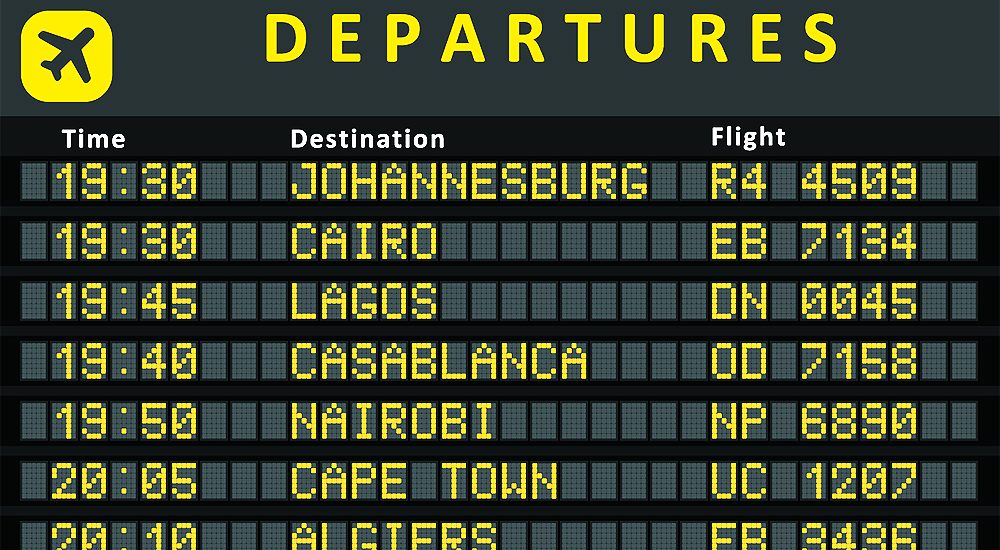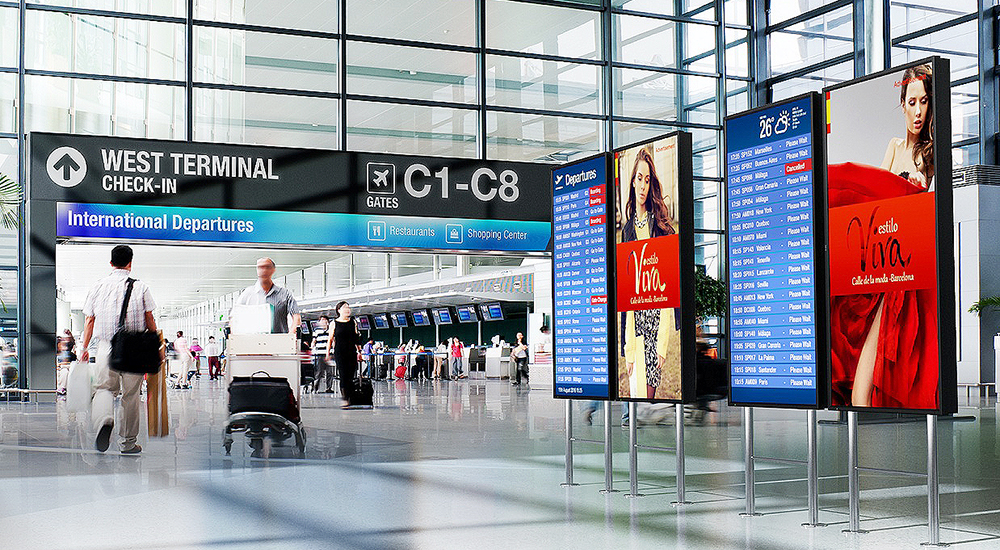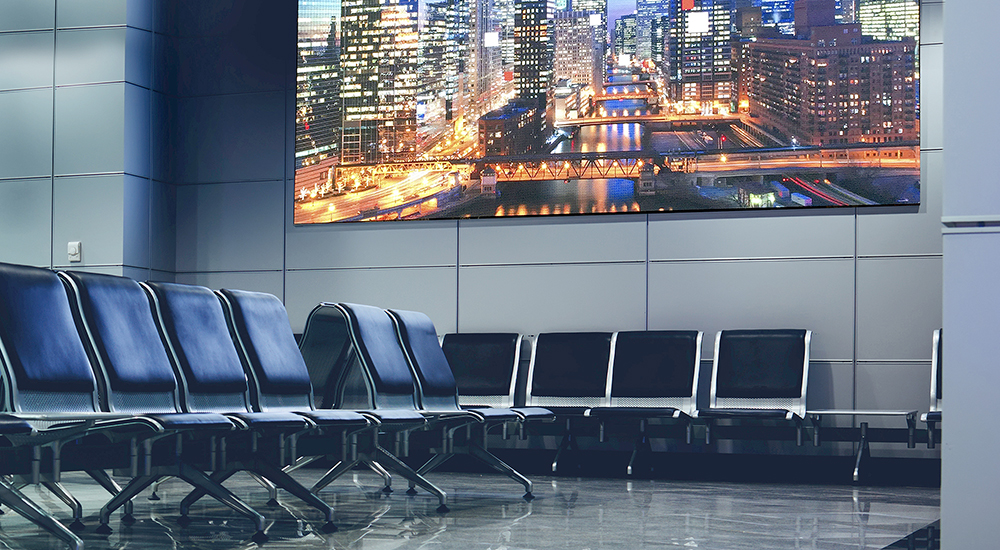Digital content is omnipresent in our daily lives. So much so that airports, train stations, supermarkets and malls without any form of digital signage would be almost unthinkable today. As a result, a major challenge companies face is how to draw attention to their content amidst so much digital information being shown to consumers. Visibility and readability of digital content are critical considerations.
The rapid growth in mall space has seen increasing recognition by retailers of the need to communicate and engage with visitors, especially under difficult economic conditions. This is a sure sign that they understand the economic benefit of doing so as retailers battle for customer footfall and business.
Selecting the best display technology for this scenario is equally critical. There are several key success factors to consider during the planning phase.
Large format displays
Digital signage installations with large format displays are versatile and can be used in bright environments. However, some variables still need to be taken into account. The correct display brightness determines how well the human eye can perceive the content. The clearer the picture is and higher the contrast, the faster viewers can perceive the content on the screen. A matte display surface should be the choice to minimise reflections and glare, leading to better readability.
Display resolution also plays a role. It influences the viewing distance and the accessibility of the content. Within a normal range or at bigger distances, there is no perceptible quality difference between high definition and ultra-high definition resolution. However, at a close range, when details are essential, there absolutely is.
This means at short viewing distances, ultra-high definition displays can deliver pixel-free, detailed pictures showing even the smallest detail. This is particularly important for digital signage in retail environments for touch installations where consumers are standing right in front of the display and for all other situations where viewers pass the screen at close range.
Interactive elements are an additional means to attract the attention of those passing by a digital signage installation. The intuitive behaviour of the displays allows users to directly choose content that is interesting to them. Interactive solutions help to draw the target audience even deeper into the experience. Multi-touch displays can have a positive influence on purchase decisions in retail environments and facilitate information intake at museums or leisure facilities.

Large-scale projectors
Besides large format displays, projectors are used for digital signage as well. Deploying projectors is particularly useful in places with little daylight. They also allow the use of surfaces that are unsuitable for the installation of fixed digital signage displays. Projectors with solid state lighting technology offer a durable and cost-effective solution for these cases.
Solid state lighting is based on either LED elements or laser diodes. Solid state lighting systems generate a longer lasting and more consistent light with effective brightness decreasing much slower over time than with lamp-based systems. The technology offers highest picture quality and significantly longer-lasting brightness compared to other light sources and has a service life of up to 20,000 hours. Content is displayed not only with superior luminosity but with consistent colour representation. Projectors can even handle 4K content and display a pin-sharp image.
These projectors enable uncomplicated maintenance because there are no lamps to change. The financial implications are significant. Users profit from lower total cost of ownership compared with other projectors in large-scale image areas. Devices with solid state lighting technology constantly deliver picture quality even in continuous operation.
Projectors are suitable for various fields of operation in the digital signage sector. They can be used in a multitude of ways with additional tools like edge blending and stacking. From oversized projections using several projectors and floor projections to 360-degree-projections – there are hardly any limits. Even relatively small budgets can make large-scale and extraordinary installations possible.
LED modules
For digital signage installations outdoor or in especially bright environments, LED modules are the right solution. They allow detailed pictures with high contrast. Unlike displays and projectors, the durable LED modules brave wind and weather even without protection modifications such as glass overlays. LED modules are easy to maintain, lowering operational expenditure in the long run. The modular design of LED walls enables flexible creative possibilities.
Better reproduction of content and lower operating costs are two aspects of digitising information. Consumers have very high expectations and want animated, current and even personalised content. The risk of getting lost in the mass of media offerings is high. However, in contrast to classic billboards, for example, the content of digital signage installations can be managed centrally and in real-time to respond to audience and advertiser needs. Costs for changing content can be significantly reduced and displays can easily be customised and updated across different locations via a central point of management.
There are a multitude of technical options to help draw the attention of a target audience in any given set of surroundings and environmental variables. Vendors can put together an appropriate solution from a comprehensive portfolio – after all, the perfect digital signage installation increases revenue.
Key takeaways
- Digital signage installations with large format displays are versatile and can be used in bright environments
- A matte display surface should be the choice to minimise reflections and glare leading to better readability
- Interactive elements are an additional means to attract the attention of those passing by a digital signage installation
- Multi-touch displays can have a positive influence on purchase decisions in retail environments and facilitate information intake
- Solid state lighting generates longer lasting and more consistent light with effective brightness decreasing much slower over time
- LED modules are easy to maintain, lowering operational expenditure in the long run
- Better reproduction of content and lower operating costs are two aspects of digitising information
- Consumers have high expectations and want animated, current and even personalised content
- Costs for changing content can be significantly reduced and displays can be customised and updated across different locations
Format, lighting, touch, distance, need to be considered when selecting a display solution, according to Adarsh Nair at NEC Display Systems.






